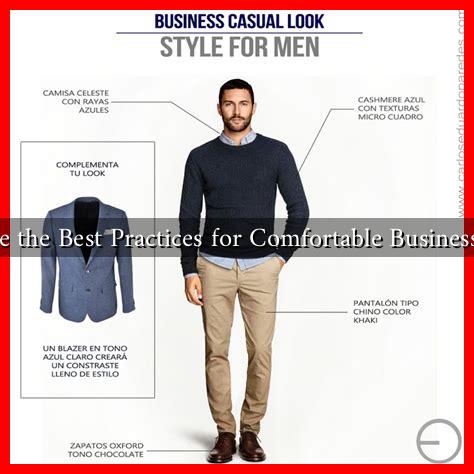-
Table of Contents
What Are the Best Practices for Comfortable Business Casual?
In today’s dynamic work environment, the concept of business casual has evolved significantly. It strikes a balance between professionalism and comfort, allowing employees to express their personal style while maintaining a polished appearance. However, navigating the nuances of business casual can be challenging. This article explores best practices for achieving a comfortable yet professional business casual look.
Understanding Business Casual
Business casual is often defined as a dress code that is less formal than traditional business attire but still maintains a level of professionalism. The key is to look polished without being overly formal. According to a survey by the Society for Human Resource Management (SHRM), 60% of companies have adopted a business casual dress code, reflecting a shift towards more relaxed workplace environments.
Key Elements of Comfortable Business Casual
To master the art of business casual, consider the following key elements:
- Fit: Ensure that your clothing fits well. Ill-fitting clothes can be uncomfortable and unprofessional. Tailoring can make a significant difference.
- Fabric: Choose breathable fabrics like cotton, linen, or blends that allow for movement and comfort throughout the day.
- Color Palette: Opt for neutral colors or subtle patterns that convey professionalism. Darker shades often appear more formal, while lighter colors can add a touch of casualness.
- Layering: Incorporate layers such as blazers or cardigans that can be added or removed based on the temperature and formality of the setting.
Women’s Business Casual Attire
For women, business casual can include a variety of options:
- Blouses and Tops: Choose blouses that are stylish yet professional. Avoid overly revealing or casual tops.
- Pants and Skirts: Tailored trousers, chinos, or knee-length skirts are excellent choices. Avoid denim unless it is specifically allowed.
- Dresses: A simple, well-fitted dress can be a great option. Pair it with a blazer for added professionalism.
- Footwear: Closed-toe flats or low-heeled shoes are ideal. Sneakers may be acceptable in some workplaces, but it’s best to check the company culture.
Men’s Business Casual Attire
Men also have a range of options when it comes to business casual attire:
- Shirts: Collared shirts, such as button-downs or polo shirts, are appropriate. Avoid t-shirts unless they are part of a company uniform.
- Pants: Chinos or dress pants are preferable. Jeans may be acceptable in some workplaces, but they should be free of rips and tears.
- Blazers: A blazer can elevate an outfit, making it more professional without being overly formal.
- Footwear: Leather shoes or loafers are recommended. Sneakers should be avoided unless they are clean and stylish.
Accessorizing for Comfort and Style
Accessories can enhance your business casual look while ensuring comfort:
- Watches: A classic watch can add a touch of sophistication.
- Belts: A well-chosen belt can tie an outfit together.
- Jewelry: Keep it minimal and professional. Avoid overly flashy pieces.
Case Studies: Companies Embracing Business Casual
Several companies have successfully implemented business casual dress codes, leading to increased employee satisfaction and productivity. For instance, tech giants like Google and Facebook encourage a relaxed dress code, which has been linked to higher creativity and innovation among employees. A study by the University of Kent found that employees who dress casually report feeling more comfortable and confident in their work environment.
Conclusion
Mastering the business casual dress code is about finding the right balance between comfort and professionalism. By focusing on fit, fabric, and appropriate attire for both men and women, employees can create a wardrobe that reflects their personal style while adhering to workplace standards. As companies continue to embrace more relaxed dress codes, understanding these best practices will be essential for navigating the modern workplace.
For more insights on workplace attire and culture, consider visiting SHRM.



